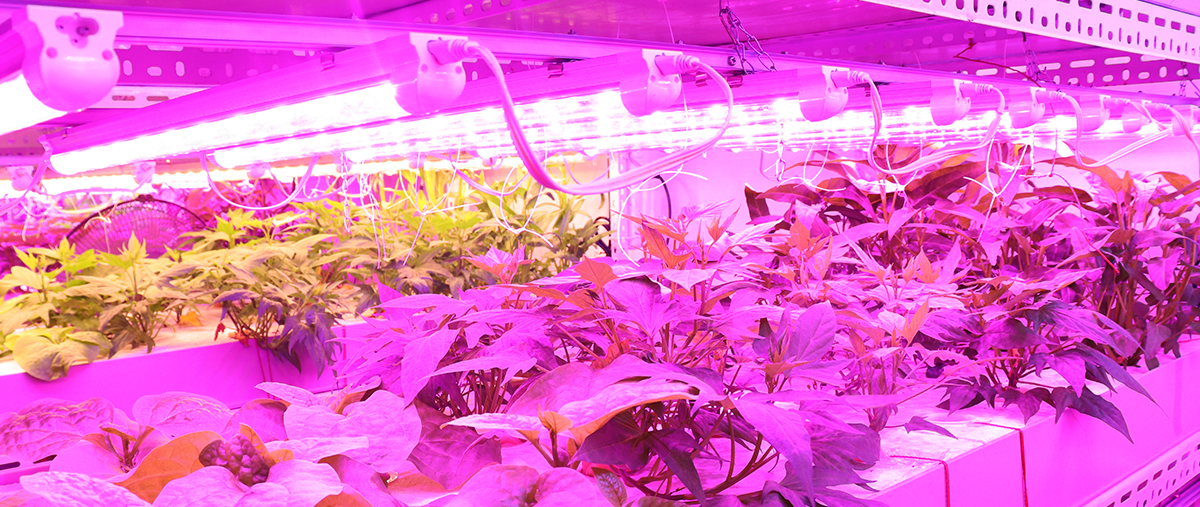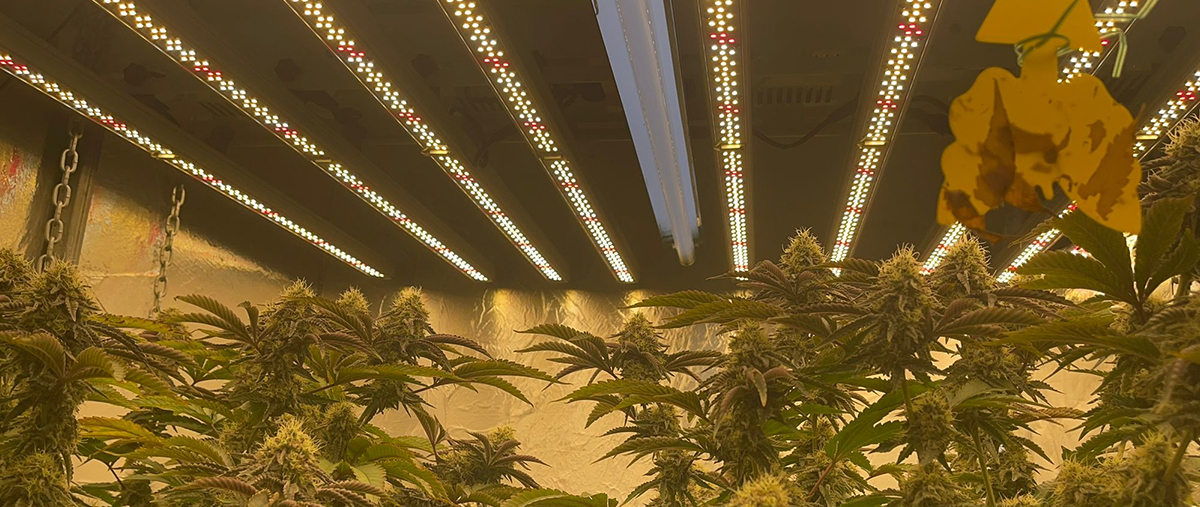Letting your green friends thrive is as important as choosing the right hat for them - the "hat" here is the grow light. You may ask: "Does my succulents, tomatoes, and the marijuana we worked so hard to raise really need to be so troublesome?" The answer is yes! Different plants are like different people, with their own needs and preferences. Some like direct sunlight and are as passionate as fire; others prefer mild and delicate light. Don’t worry, we are here to help you solve this trouble and let’s take a look at how to choose their favorite “hat” according to different types of plants!
Understanding the light needs of plants
Plants convert light energy into chemical energy through photosynthesis for their own growth. However, not all light is equally beneficial to plants. Different wavelengths of light have different effects on plants:
Blue light: It is particularly important to promote the production of chlorophyll and start the initial growth process of plants.
Red light: plays a key role in plant flowering and fruiting.
Plant light types and characteristics
In the market, we usually encounter three main types of grow lights: LED, HID (including high-pressure sodium lamps and metal halide lamps) and fluorescent lamps. Each lamp has its own unique characteristics and applicable scenarios:
LED grow lights: provide a wide spectrum range, high energy efficiency, low heat, and long life, making them the most suitable choice for long-term and multi-stage plant growth.
HID lamps: High light intensity, suitable for promoting rapid plant growth, but high heat and high energy consumption.
Fluorescent lights: emit mild light, suitable for seedling growth stages or plants with low light needs.
Matching plant species and plant lights
1. Leafy vegetables
These plants, such as lettuce, spinach, and kale, generally require more blue light to promote healthy leaf growth and enhance photosynthetic efficiency. Therefore, choosing LED lights rich in the blue light spectrum or specially designed fluorescent lights can provide ideal growing conditions for such plants.
Recommended light source: LED lamp with high blue light ratio, or fluorescent lamp.
Tip: Maintain moderate light hours, generally 14-16 hours a day, to simulate the natural light cycle from spring to summer to optimize the growth of leafy vegetables.
2. Flowering plants
Flowering plants such as roses, gerberas, and rhododendrons especially need red light during the flowering stage to promote bud formation and flowering. Blue light is equally important as it helps plants maintain a steady growth rate and healthy chlorophyll levels.
Recommended light source: Full spectrum LED light that provides balanced blue and red light.
Tips: During the flowering period, you can appropriately increase the proportion of red light or use a light setting that is more biased toward red light to imitate autumn sunlight and stimulate plant flowering.
3. Fruit and vegetable plants
When growing fruit-bearing plants such as tomatoes, peppers or strawberries, red light is essential to promote fruit ripening and increase yields. At the same time, blue light provides essential support during the plant's early growth stages, promoting robust stem and leaf development.
Recommended light source: Adjustable spectrum LED lights to adjust the ratio of blue and red light at different stages of growth.
Tips: Emphasis on blue light in the early growth stage to promote the formation of strong stems and leaves; after entering the fruiting period, increase the proportion of red light to support fruit development and maturity.
4. Succulents
Succulents, such as succulent cacti and succulent mosaic varieties, require bright but indirect light. They have lower light requirements, but still need a specific spectrum to simulate natural sunlight and promote photosynthesis and pigment formation.
Recommended light source: full-spectrum LED light, providing a spectral combination close to natural light.
Tip: Although succulents are drought tolerant and have low light requirements, proper light adjustment promotes healthier growth and rich color.
5. Cannabis Plant
As a plant with high sunlight sensitivity, cannabis needs light that changes with different stages of its growth cycle. During its life cycle, a cannabis plant has different needs for light spectrum at each stage from germination to growth to flowering.
Germination and Growth Phase: During this stage, cannabis plants need lots of blue light to promote healthy leaf and stem growth. Blue light helps plants build strong root systems and stems, laying a solid foundation for the subsequent flowering stage.
Flowering Stage: When a cannabis plant enters the flowering stage, red light becomes crucial. Red light encourages cannabis plants to produce more flowers while increasing the content of active compounds such as THC and CBD. In addition, appropriate far-red light can also promote the formation and maturity of flowers.
Recommended light source: Full-spectrum LED grow lights are the first choice for cannabis growers. They not only provide the blue and red light needed for the entire life cycle, but also adjust the spectrum according to the specific needs of the plants. LED fixtures that can precisely control lighting conditions are particularly valuable for commercial cannabis cultivation, as they directly impact the quality and yield of the final product.
Tip: During the budding and growth stages of cannabis, maintain a high proportion of blue light and provide 18-24 hours of continuous light per day to simulate the long day conditions of summer. After entering the flowering stage, increase the proportion of red light and adjust the light cycle to 12 hours of light/12 hours of darkness to simulate the short days in autumn and stimulate plant flowering.
Different types of plants have different light needs, and choosing the right grow light can significantly affect your plant's health and yields. Through the above guide, I hope it can help you provide the most suitable "sunlight" for your plant partners. If you want to know more planting tips, you can click below to contact us~

























